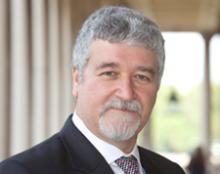Scientists launch world’s most advanced crowd simulation and evacuation software!
Scientists launch world's most advanced crowd simulation and evacuation software!
The software, created by the university’s Fire Safety Engineering Group, is already one of the world’s leading design tools for simulating evacuations of people from buildings in both normal and emergency conditions. The latest release (known as Version 5.0) has new capabilities that will enable building engineers to perform the most realistic desktop simulations that have ever been possible, predicting not only how individual people interact with each other and the built environment, but also how they can be debilitated by hazards such as heat, smoke and toxic gases.
The university’s Fire Safety Engineering Group is a world leader in computational fire engineering. It has unparalleled expertise in aircraft, building, ship and rail evacuation and fire modelling, with its team of experts undertaking a unique combination of leading-edge research, large-scale human factors trials and practical real world consultancy. Fire Safety Engineering Group’s projects have included studies of the Airbus A380 super jumbo, the Sydney and Beijing Olympics, the World Trade Centre evacuation and the 7 July London bombings.
The latest software, Version 5.0, draws extensively on data and experience captured from experiments and real-life incidents. Its human behaviour sub-model includes rules governing the often complex behaviour of people affected by smoke in fire situations and the use of signage in an emergency. It also examines the psychological aspects governing how, and why, people select an escalator or an adjacent staircase as their escape route.
Professor Ed Galea, Director of the University’s Fire Safety Engineering Group and developer of building EXODUS, says: building “EXODUS Version 5.0 provides building engineers with a sophisticated and powerful analysis tool to simulate and analyse crowd movement and evacuation.
The new capabilities are a direct response to needs identified by our clients around the world. They represent a quantum leap in the sophistication offered by building EXODUS, and will help to maintain the software as one of the most advanced crowd simulation packages available.
The arrival of this level of sophistication on the desktop means that building engineers can test more designs in less time, giving them the most accurate, and extensively researched, resources for organising the evacuation of buildings.
Fire Safety Engineering Group is part of the School of Computing & Mathematical Sciences at the University of Greenwich. The group’s other products, which are also leading design tools used around the world, are air EXODUS, designed specifically for evacuating aircraft, and SMARTFIRE, a fire simulation software used by fire engineers.
Since its launch in 1996, the building EXODUS package has been used by engineering consultancies, architects, research laboratories, regulatory authorities, police forces, fire brigades and universities in 37 countries.
The package has also been used to model the evacuation capabilities of a wide range of proposed or existing buildings and crowd situations, from the Love Parade disaster analysis to the Beijing Olympics, and from the World Trade Centre investigation to the Statue of Liberty redevelopment.
The software is used in design analysis for underground stations, high-rise buildings, hospitals, shopping complexes, school buildings, museums, theatres, airport terminals, sports stadia, external crowd events – in short, for virtually any type of situation involving the gathering or movement of people.
For more information on building EXODUS, please visit the Fire Safety Engineering Group website at
Story by Public Relations
Picture: Professor Ed Galea.

